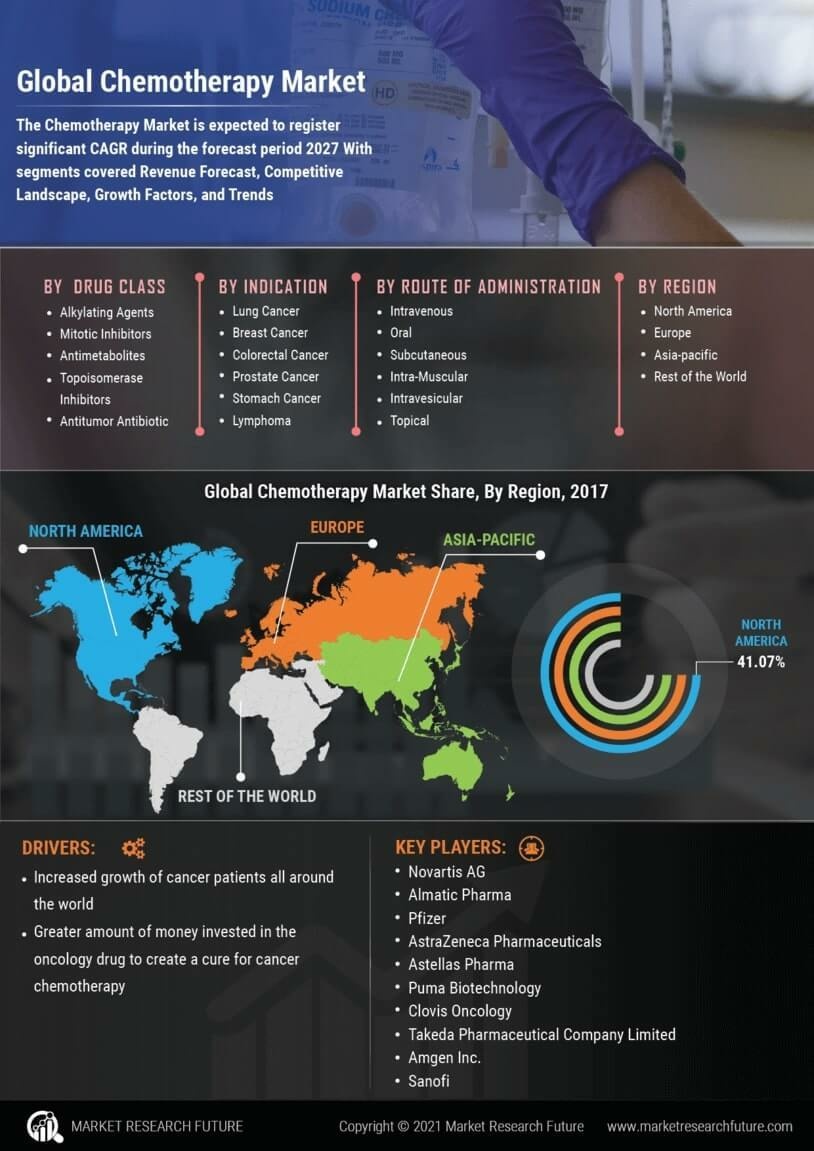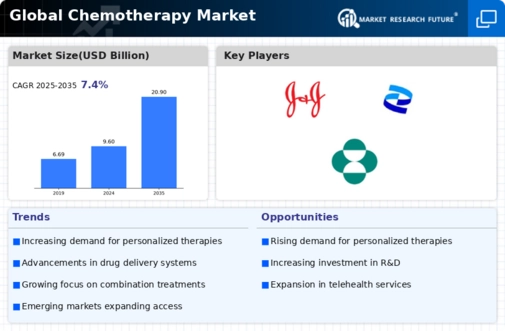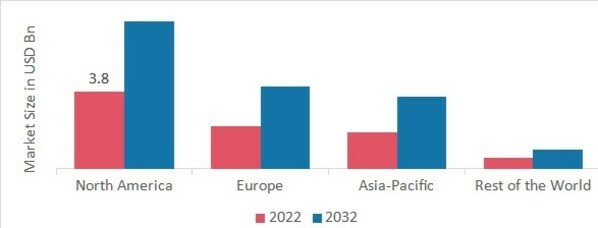Market Growth Projections
The Global Global Chemotherapy Market Industry is projected to experience substantial growth over the coming years. The market is expected to reach a value of 9.6 USD Billion in 2024 and is anticipated to grow to 20.9 USD Billion by 2035. This growth trajectory suggests a compound annual growth rate (CAGR) of 7.31% from 2025 to 2035. Such projections indicate a robust demand for chemotherapy treatments, driven by various factors including advancements in drug development, increasing cancer incidence, and enhanced healthcare access. These figures underscore the market's potential and the critical need for continued investment in cancer therapies.
Rising Incidence of Cancer
The Global Global Chemotherapy Market Industry is experiencing growth driven by the increasing incidence of cancer worldwide. According to data from the World Health Organization, cancer cases are projected to rise significantly, with an estimated 19.3 million new cases diagnosed in 2020. This alarming trend necessitates the development and administration of effective chemotherapy treatments, thereby propelling market expansion. As the global population ages and lifestyle factors contribute to higher cancer rates, the demand for chemotherapy is expected to surge, contributing to the market's projected value of 9.6 USD Billion in 2024.
Increased Healthcare Expenditure
Rising healthcare expenditure globally is a significant factor influencing the Global Global Chemotherapy Market Industry. Governments and private sectors are investing more in healthcare infrastructure and cancer treatment programs. According to the World Bank, global health expenditure has been on an upward trajectory, with many countries allocating larger budgets to oncology services. This increased funding facilitates access to chemotherapy treatments, thereby expanding the market. As healthcare systems evolve and prioritize cancer care, the Global Global Chemotherapy Market is likely to witness sustained growth, with a projected CAGR of 7.31% from 2025 to 2035.
Advancements in Chemotherapy Drugs
Innovations in chemotherapy drugs are a pivotal driver for the Global Global Chemotherapy Market Industry. The introduction of targeted therapies and immunotherapies has transformed treatment protocols, offering more effective options with fewer side effects. For instance, the development of monoclonal antibodies and small molecule inhibitors has enhanced treatment efficacy for various cancers. These advancements not only improve patient outcomes but also stimulate market growth, as healthcare providers increasingly adopt these novel therapies. The market is anticipated to reach 20.9 USD Billion by 2035, reflecting the impact of these innovations on chemotherapy practices.
Emerging Markets and Accessibility
Emerging markets are becoming increasingly relevant to the Global Global Chemotherapy Market Industry. Countries in Asia, Africa, and Latin America are witnessing improvements in healthcare access and infrastructure, leading to greater availability of chemotherapy treatments. For instance, initiatives to enhance healthcare systems in India and Brazil have resulted in increased patient access to essential cancer therapies. This trend is likely to contribute to market growth as more patients seek treatment. The Global Global Chemotherapy Market is poised for expansion, with emerging economies playing a crucial role in shaping future demand.
Growing Awareness and Screening Programs
The Global Global Chemotherapy Market Industry benefits from heightened awareness of cancer and the importance of early detection. Public health campaigns and screening programs have been instrumental in educating populations about cancer risks and the necessity for timely treatment. For example, initiatives led by the American Cancer Society have significantly increased screening rates, leading to earlier diagnoses. This proactive approach not only improves survival rates but also drives demand for chemotherapy as a treatment option. As awareness continues to grow, the market is expected to expand, reflecting the critical role of education in cancer management.





